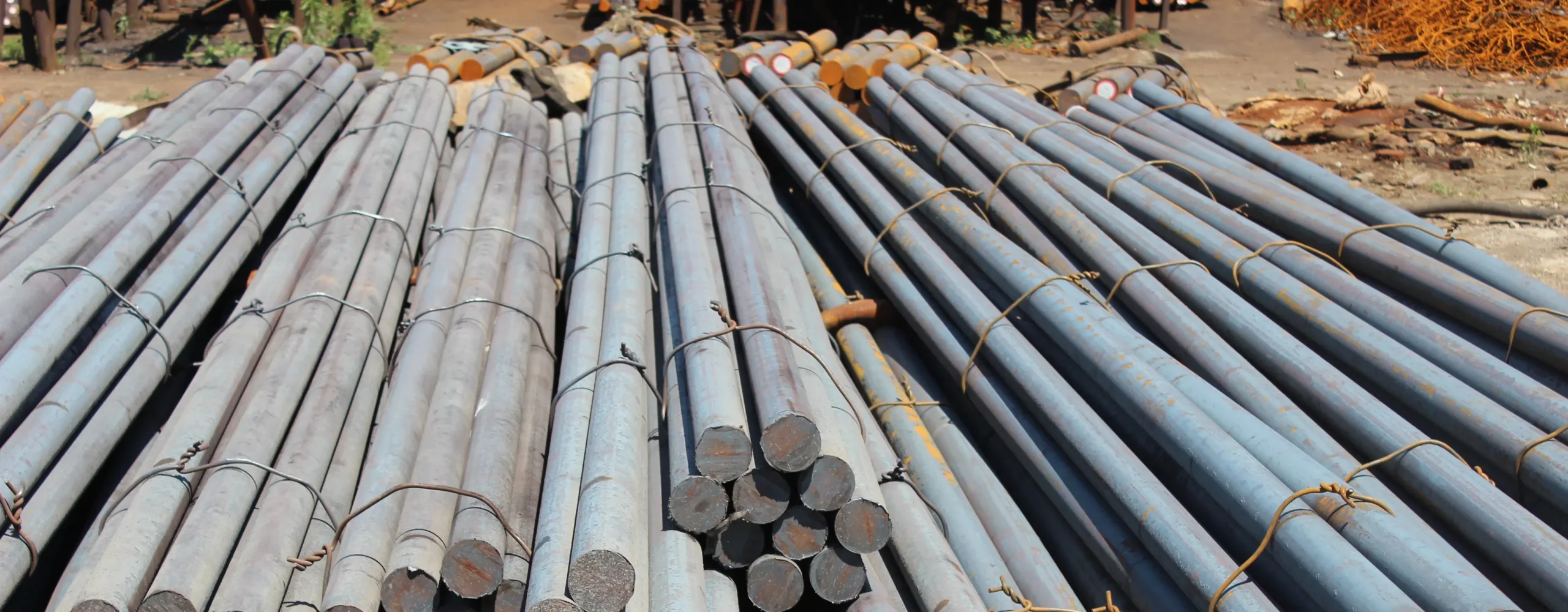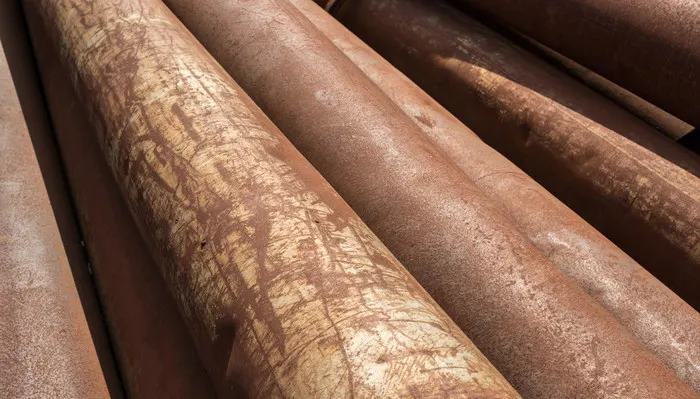Hastelloy C22 does not corrode as easily as standard stainless steel, leading to costly downtime and failures. Hastelloy C22 is critical when your system must withstand the harshest conditions. Ideal for manufacturing critical components such as speciality stainless steel pipework and fittings.
What is Hastelloy C22? Your Shield Against Aggression!
Hastelloy C22 (UNS N06022) is a versatile nickel-chromium-molybdenum-tungsten alloy that belongs to the Hastelloy alloy family,Hastelloy C Series. Due to its chromium content, it creates strong corrosion resistance. It resists both oxidising and reducing corrosive media. It also resists mixed acid streams. This alloy is particularly effective against pitting, crevice corrosion and stress corrosion cracking. Its robust composition ensures long-term integrity. Its performance far exceeds that of many conventional stainless steels.
Core Advantages of Hastelloy C22
For discerning buyers and engineers, Hastelloy C22 offers unique advantages. Its superior performance translates directly into higher system reliability and lower operating costs.
C22 resists a wide range of aggressive chemicals. This includes nitric acid, chlorine, and wet chlorine gas. It performs in both oxidizing and reducing environments. This versatility reduces material inventory needs.
This alloy shows remarkable resistance. It combats localized attacks like pitting and crevice corrosion. These are common failure modes in many alloys. This property ensures longer component life in stagnant conditions.
Many stainless steels are fragile. However, C22 is resistant to stress corrosion cracking caused by chlorides. This provides important safety for chloride-rich solutions. This is critical for chemical process pipework.
Despite its strength, Hastelloy C22 is readily weldable. It forms strong, ductile welds. This allows for complex designs. It simplifies the fabrication of intricate pipe systems.
Hastelloy C22 maintains its corrosion resistance after welding. It resists sensitization. This means its properties remain intact. This ensures consistent performance across the entire fabricated structure.
Chemical Composition of Hastelloy C22
| Element | Ni | Cr | Mo | W | Fe | Co | Mn | Si | V | C | P | S |
|---|---|---|---|---|---|---|---|---|---|---|---|---|
| Content (%) | Balance | 20.0-22.5 | 12.5-14.5 | 2.5-3.5 | 2.0-6.0 | ≤2.5 | ≤0.50 | ≤0.08 | ≤0.35 | ≤0.015 | ≤0.020 | ≤0.020 |
What We Do
Mechanical Properties of Hastelloy C22
| Tensile Strength | Yield Strength (0.2% Offset) | Elongation (in 50mm) | Hardness (HB) | Density | Melting Range |
|---|---|---|---|---|---|
| ≥690MPa ( ≥100ksi ) | ≥310MPa ( ≥45ksi ) | ≥40 | ≤102 | 8.69g/cm³ | 1399−1446°C |
Demanding Pipe & Fitting Systems
While stainless steel offers good general corrosion resistance, Hastelloy C22 takes performance to the next level. It’s chosen when stainless steel or even other nickel alloys are insufficient.
Purity is paramount in pharmaceutical processes. Hastelloy C22 resists contamination. It handles various aggressive media used in drug synthesis. It maintains product integrity.
Flue gas desulfurization systems use C22. It combats wet chlorine gas and other acidic condensates. This extends the life of scrubbers and ducts.
Hazardous waste processing demands robust materials. Hastelloy C22 pipes and vessels withstand aggressive waste streams. They ensure safe and efficient disposal.
Common Product Forms and Applicable Standards
| Product Form | Relevant ASTM/ASME Standards |
|---|---|
| Seamless Pipe & Tube | ASTM B619, ASTM B622, ASME SB619, ASME SB622 |
| Welded Pipe & Tube | ASTM B619, ASTM B626, ASME SB619, ASME SB626 |
| Pipe Fittings | ASTM B366 (covers various forms like elbows, tees, reducers) |
| Plate, Sheet & Strip | ASTM B575, ASME SB575 |
| Bar & Rod | ASTM B574, ASME SB574 |
| Forgings | ASTM B564 |
Welding Best Practices for Hastelloy C22 Systems
Proper welding techniques are essential for pipe and fitting systems. They ensure the integrity and performance of the final assembly.
- Filler Metal Selection: Use a matching Hastelloy C22 filler metal. AWS A5.14 ERNiCrMo-10 is the recommended choice. This maintains the weld’s corrosion resistance.
- Cleanliness: Thoroughly clean all surfaces before welding. Remove any oxides, grease, or contaminants. This prevents weld defects.
- Low Heat Input: Control heat input precisely. Avoid excessive temperatures. This minimizes distortion and preserves mechanical properties.
- Shielding Gas: Use pure argon for shielding. This protects the weld pool and surrounding area. It prevents atmospheric contamination.
- No Post-Weld Treatment: Generally, post-weld heat treatment is not required. Hastelloy C22 resists sensitization. This simplifies fabrication processes significantly.
Hastelloy C22 vs. C276: Key Differences
| Feature | Hastelloy C22 | Hastelloy C276 |
|---|---|---|
| Chromium Content | Higher (20-22.5%) | Lower (14.5-16.5%) |
| Primary Resistance | Oxidizing, Mixed Acids | Reducing, Wet Chlorine |
| Localized Corrosion (Pitting/Crevice) | Superior Resistance | Very Good Resistance |
You May Also Want To Read:
Comparison Table Of Nickel-based Alloy And Nickel Grades In Various Regions
Alloy 625 VS Hastelloy C276
What is the difference between Hastelloy C22 and C276?
Most complete summary! Pay attention to these nine key points about welding Hastelloy C-276.
Hastelloy B2 Alloy Overview
Hastelloy C4 | UNS N06455 A Stable Workhorse in High Pressure Pipe Systems
Hastelloy C59 | UNS N06059 Unlock Ultimate Resistance
Hastelloy C2000 | Properties | The Next-Gen Superalloy
What is Hastelloy B3 and How Does it Fight Strong Acids?
What is Hastelloy B4 and How Does it Prevent Stress Cracking?
What Is Hastelloy G3? A Versatile Corrosion Fighter!
What is Hastelloy G35 and How Does it Conquer Corrosive Acids?
What is Hastelloy G50 and How to Use it for Critical Piping?
Contact Us
- RM901 No.22 Tangjiaqiao Road Wenzhou China
- +86 577 8551 1171
- [email protected]
- https://www.kaysuns.com/



